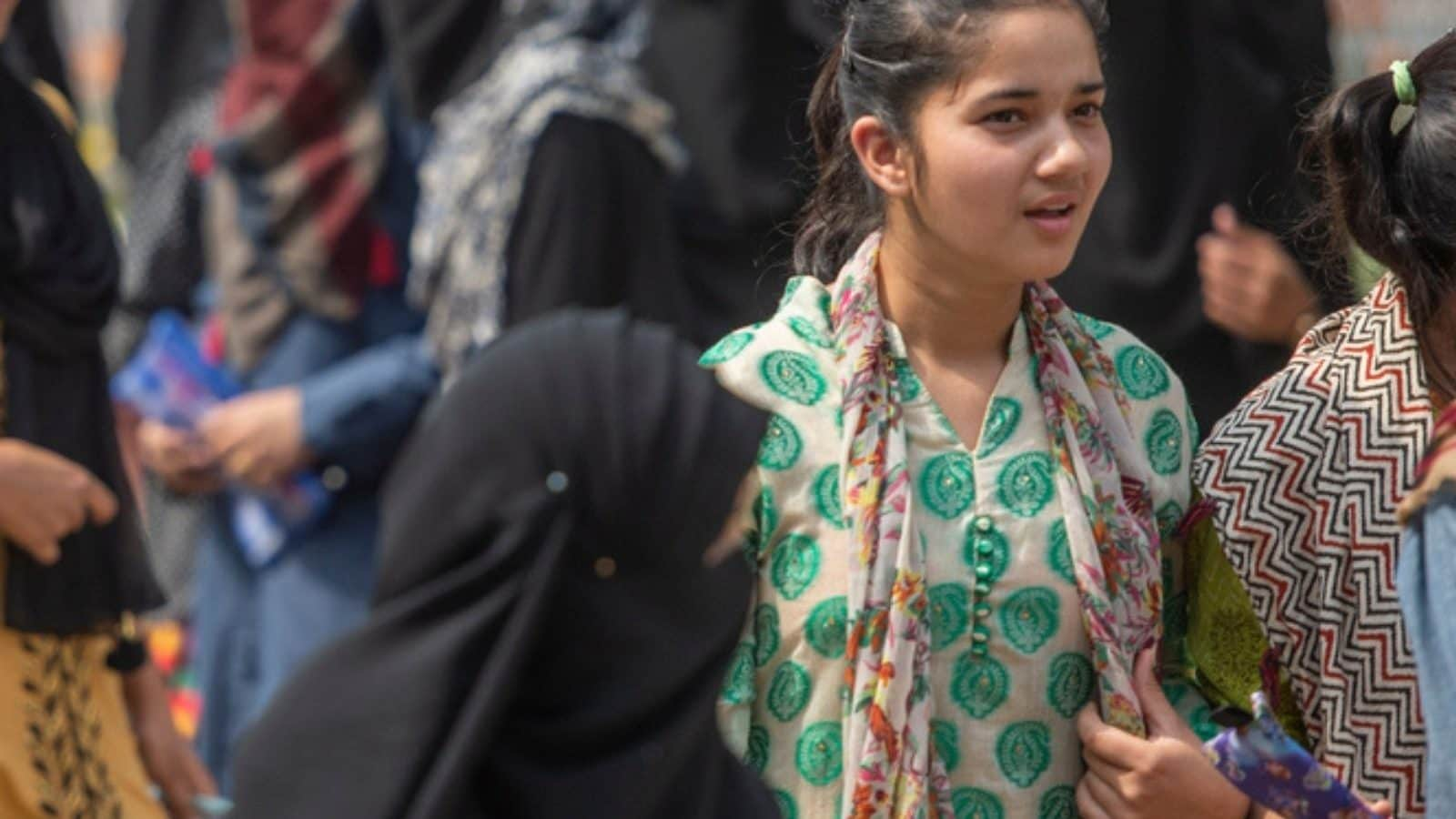The familiar rituals of a school sparking back to life were especially poignant after a year and a half of disruption driven by the coronavirus pandemic, said Sheriff, head of the Red Kite Learning Trust, a group of primary and secondary schools in the Yorkshire region. But in addition to the usual excitement, he had a new feeling this year: “Trepidation.”
The start of a new school year in many northern hemisphere nations comes as the highly infectious delta variant continues to drive a surge in coronavirus cases – especially among children, many of whom are not yet eligible for vaccination.
Still, many governments including Britain’s are determined to get children back into classrooms after 18 stop-start months of lockdowns, remote learning and abandoned exams. UK schools, have closed for three-month stretches twice since early 2020, and major year-end exams have been canceled two years running, throwing university admissions into chaos.
While most European countries are retaining some restrictions for schools, British Prime Minister Boris Johnson’s Conservative government is pushing this year for something approximating pre-pandemic normality. It has removed social distancing and mask-wearing orders and no longer requires pupils to be grouped into “bubbles” to limit the spread of the virus.
Instead, the government says students should be tested regularly, and schools will be given guidance on improving ventilation.
Politicians and the group of scientists that advises the government have acknowledged it’s a gamble. The Scientific Advisory Group for Emergencies said in August that “it is highly likely that exponential increases will be seen in school-attending age groups after schools open.”
A separate independent group of scientists that is often critical of the British government’s pandemic response went further, calling the plan “reckless.”
But Education Secretary Gavin Williamson said testing would help root out cases, and defended the government’s strategy as striking a “sensible balance.”
Britain, which lifted almost all pandemic restrictions on business and socializing in July, has among the highest coronavirus rates in Europe, with upwards of 30,000 new confirmed infections each day. Hospitalizations and deaths remain far lower than during previous surges, thanks to an inoculation campaign that has seen nearly 80% of people over 16 fully vaccinated. But Britain is still averaging about 100 coronavirus deaths every day.
Unlike the UK, Italy and Spain are maintaining social distancing and masks for students and staff. Italy also requires teachers to show proof of vaccination or a recent negative coronavirus test, as do Turkey and Greece.
In France, where students headed back to school Thursday, face coverings must be worn by pupils 6 and up, and whole primary school classes will be sent home if one child tests positive.
In the Balkan nations that are among Europe’s poorest, meanwhile, low vaccination rates and surging outbreaks have made it difficult to get kids back to class after a year and a half.
In Kosovo, where the weekly average of new cases rose more than tenfold between July and August, the start of the school year has been delayed by two weeks until Sept. 13. Neighboring Albania also postponed school, and the government has ordered mandatory vaccinations for teachers. Only a third of Albania’s population, and less than 20% of people in Kosovo, have been fully vaccinated.
Even in countries with high inoculation rates, warning bells are sounding in areas where schools have already returned. Scotland has seen cases soar to the highest level yet in the pandemic since schools reopened in mid-August. Israel, where school resumed Wednesday, is restricting students in areas with the highest infection rates to online learning for now.
In Germany’s North Rhine-Westphalia, 30,000 students and almost 300 teachers in the state of 18 million are in quarantine, two weeks after school started. Infection rates in young people between 5 and 19 are by far the highest of any age group.
The United States may give hints of what lies ahead. American students returned to classrooms over the last month in many places just as the delta variant started to hammer the country, triggering dozens of outbreaks in schools. In some states, children now make up the largest proportion of new COVID-19 infections.
Many schools have shut down entirely or reverted to online learning because so many children and staff got sick or had close contact with those infected. In the state of Georgia, many school superintendents said they experienced more cases and quarantines in the first few weeks of class than during all of last year.
The start of school year has also led to fierce battles between parents and administrators over mask requirements that have devolved into violence at times.
European countries appear less polarized, but tensions around masks and vaccines are rippling in countries including Poland, where school leaders are bracing for pushback from parents.
“I cannot imagine a 7-year-old wearing a mask anywhere at school, even for five minutes,” said Alina Nowak, the mother of a student at a primary school in southern Warsaw. “They are stressed out enough as it is, returning after the lockdown.”
Teachers’ unions in several countries have opposed mandatory vaccinations for school staff. In Italy, protests against the government’s “green pass” system of vaccine passports have been marred by violence, including an attack in which a reporter for the national daily La Repubblica was punched repeatedly in the face.
Many countries with high vaccine rates are banking on immunization to serve as a bulwark between infection and illness – especially in Britain since there are few other restrictions. Most UK teachers have been vaccinated, though it’s not mandatory. Sheriff says only two of his schools’ 1,400 staff have declined to get the vaccine.
But most schoolchildren remain unprotected. Britain is currently offering shots to those aged 16 and up.
In the meantime, some schools are sticking to tougher measures than the government advised.
Pepe Di’Iasio is keeping masks in hallways and communal areas of Wales High School near Rotherham in northern England where he is the principal.
“We felt we’d start cautiously and keep masks rather than have to move back into that situation should there be a spike,” he said.
“My prediction is that we’ll see more masks be worn in the next month. I mean, I hope not,” he said. “But I think experience would tell us that they will.”
Source link




